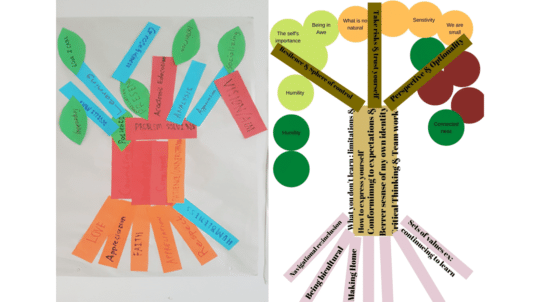Using metaphors as a way to enhance or “unstick” a discussion
Dear collaborative discussion friends,
This time we are focusing on an activity that can be used to help “unstick” groups. Sometimes groups need creative interventions or stimulants to help move past default processing, socially conditioned contributions, groupthink, or just plain old boring comments. Sometimes groups need to think about a topic from a completely different perspective. This time we introduce a tool for expanding thinking by using metaphors.
Contributed by Lori Britt, Professor, School of Communication & ICAD Co-Director at James Madison University, this toolkit activity offers creative interruption to expand group thinking. It can be found in our Creative Collaboration Module.
If you missed the previous newsletter about Building on the Ideas of Others, you can access it and our other weekly newsletters by subscribing below.
This week’s activity:
Activity 2.7 – Expanding Thinking with Metaphors
How to use metaphors as a way to enhance or “unstick” a discussion
Metaphors allow us to transcend literal meanings. Metaphorical language activates the imagination by drawing comparisons between two unlikely or unrelated things. This is a useful tool to use when discussions get too familiar and the same words and phrases are used over and over. As the facilitator, you have the power to pause the discussion and introduce this activity. It will allow you to re-engage the topic in a new light or from a new perspective. By making the ordinary strange, the discussion group can re-engage the topic from new and interesting perspectives.
When to use the Metaphor Activity?
- Facilitators can introduce this activity as an intervention, when the discussion seems single-track or stuck.
- This activity can also be used preemptively as a warm-up, encouraging discussants to be more playful and think beyond typical boundaries before the discussion even begins.
- Individually, you might use this activity if you are trying to think through a problem or puzzle. Or, maybe you are trying to find other ways to explain a complicated topic. This activity helps to expand your own framing and communication about an issue.
How to use the Metaphor Activity?
Pick a topic that is relevant for your discussion group. For example, let’s say you are exploring “threats to democracy in the United States” but the conversation seems overly focused on just a few obvious examples. Ask discussants in the group to pause and take 5 minutes to write down their thoughts about democracy using metaphors.
You might demonstrate the activity by initially asking them to examine how “threats to democracy” are:
- A vegetable garden
- Rush hour traffic
- A computer virus
- Splintering wood
- Eagles Football Fans (Fly, Eagles, Fly)
Take 5 minutes to allow everyone to write down their answers. And then share back to the full group. Participants will explain the connection. As they share, they can help each other build out the idea.
Next, ask participants to come up with their own metaphor. Democracy is…. Or, threats to democracy are…
Again, give individuals a few minutes to write down their answer and then share back in small or full groups. Encourage them not to overthink it. This can be a fast activity designed to get participants thinking more creatively. It is a playful activity. There will be a lot of laughter. The goal is to stretch thinking by making connections between two unlikely things. The process will require some creative thinking and, hopefully, encourage participants to be more bold, playful, and expansive in the discussion. The activity also includes debriefing and reflection questions and a practice journal prompt.
If you try out these activities, please share with us what you think:
We hope these quick introductions to our toolkit activities are helpful. In our upcoming newsletter we will be highlighting activities that encourage us to take a deeper look at how values and the ordering of values play out in our discussion experiences.
Upcoming Events
- We are accepting applications for our next Collaborative Discussion Coach Training (May 31 – June 6). This training is open to anyone interested in offering certificate programs in the future. You can apply here or share this newsletter with people you think might be interested.
- We are also accepting nominations for our Pilot Coach Training for Undergraduate Students. Space will be limited. You can learn more or nominate a student by emailing me at [email protected]
Looking forward to collaborating with you this year,
Shannon Wheatley Hartman & the Collaborative Discussion Team





